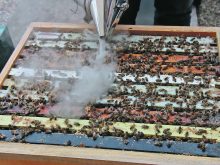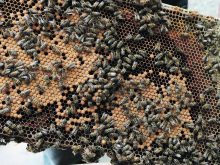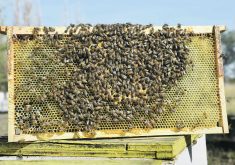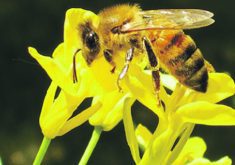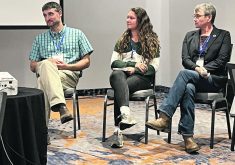BROOKS, Alta. — Leafcutter bees are integral to the production of alfalfa seed, but they go unrecognized in national data on pollination related to agriculture.
Bee researcher Shelley Hoover of Alberta Agriculture said leafcutters pollinate alfalfa as well as southern Alberta’s valuable seed canola crops, and statistically recognizing their value could leverage research money as it has done for the honeybee industry.
“Ag Canada collects statistics on the economics of all the different economic sectors. They even collect statistics on the value of pollination to agriculture, but they only collect statistics on the value of honeybee pollination to agriculture,” Hoover recently told the Alfalfa Seed Commission’s annual meeting.
Read Also
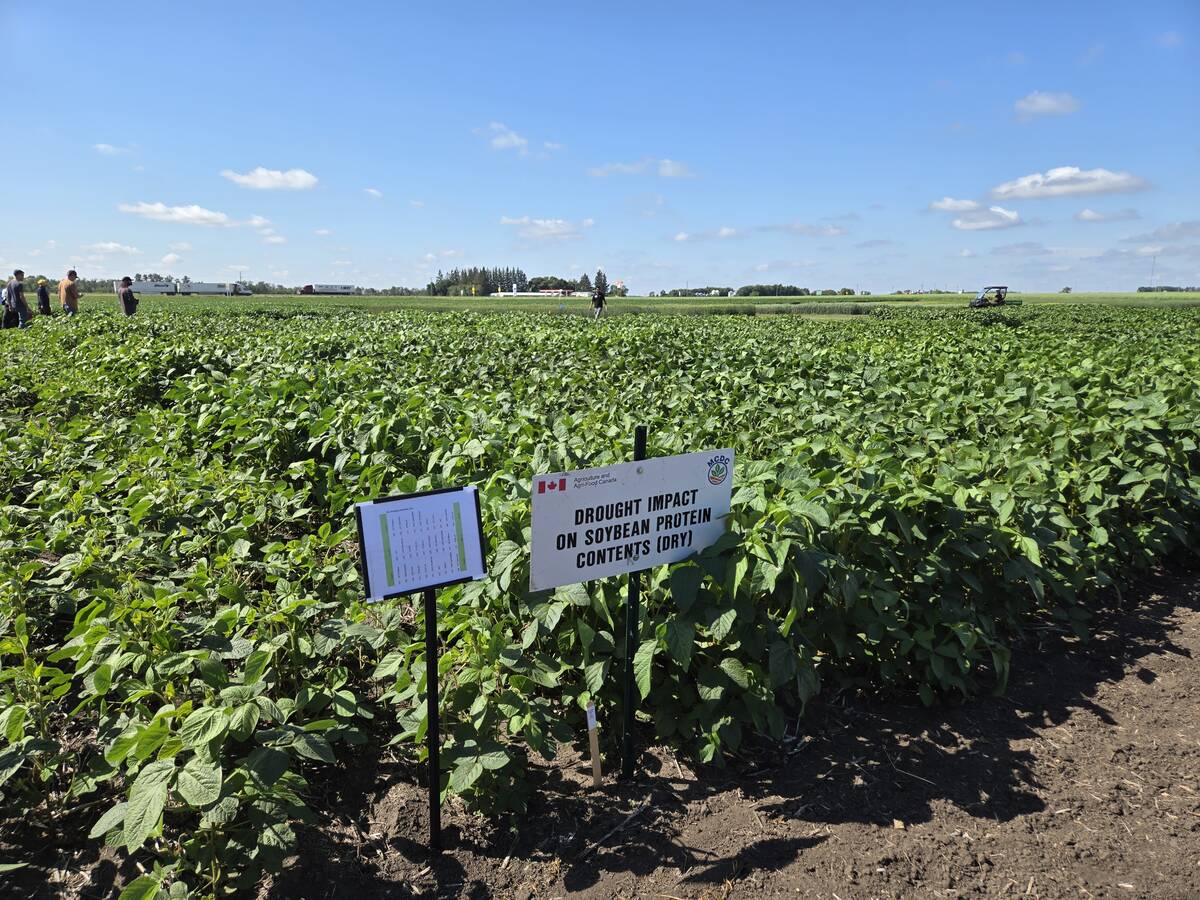
Carberry field day looks for agriculture solutions
Manitoba farmers explored research solutions for resilient crops, perpetual agronomic issues and new kinds of agricultural products at a field day at the Manitoba Crop Diversification Centre in Carberry on Aug. 6.
“They ignore all other pollinators. It seems kind of strange to me to talk about the pollination of alfalfa seed and the value that brings to agriculture without talking about leafcutter bees.”
Hoover said Agriculture Canada data indicates that honeybee pollination was worth more than $2 billion to Canadian crops in 2013, including $2.5 million in value for alfalfa seed. It pegged honeybee pollination’s value to oilseeds at $1.5 billion.
“The value of honeybee pollinators is becoming increasingly recognized in agriculture, and so the honeybee keepers can say, ‘look, the value of honey is only this much but look at what we bring to agriculture as a whole and especially the high value oilseed crops,’ ” Hoover said in an interview after her presentation.
“That’s over $1 billion, no matter which way you calculate it . But half of that is leafcutters, if you’re talking about the seed production for canola. So they leverage this value out of it politically.”
Attention to the value of pollination has led to establishment of a national bee health roundtable initiative, focusing primarily on honeybees.
The initiative brings a higher profile to the honey industry and allows for initiatives such as cataloguing research projects and helping gain needed product registration and information on best management practices.
“As an industry, we need to get the value of not just alfalfa seed production recognized economically in terms of agriculture, but also the value of the bees themselves and the pollination that they provide to alfalfa, to canola and even on occasion to blueberries,” she said.
Hoover and her research team study bees in relation to both alfalfa and canola crops in southern Alberta.
Contact barb.glen@producer.com





